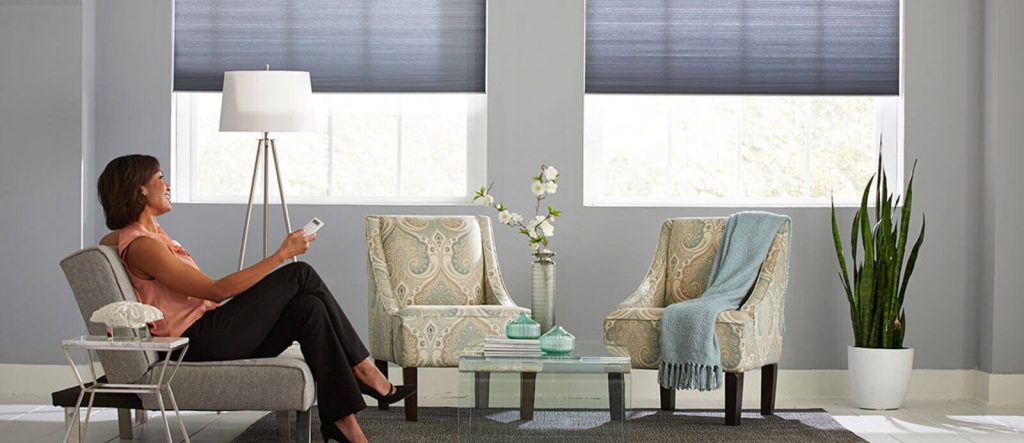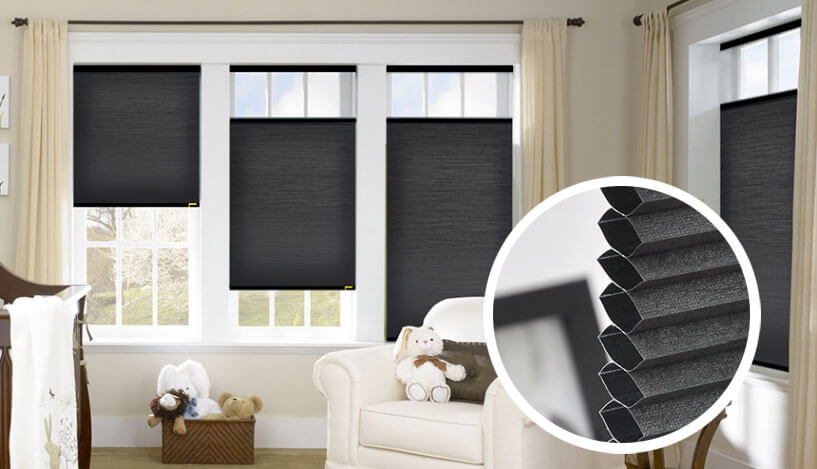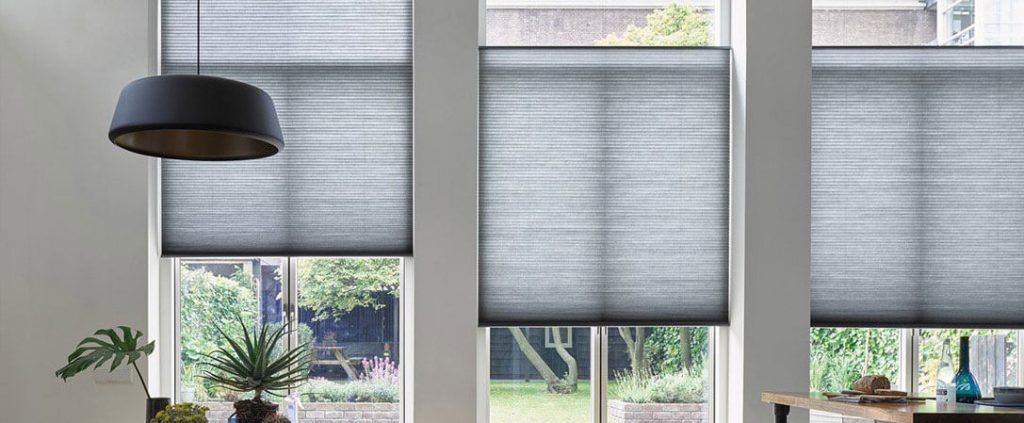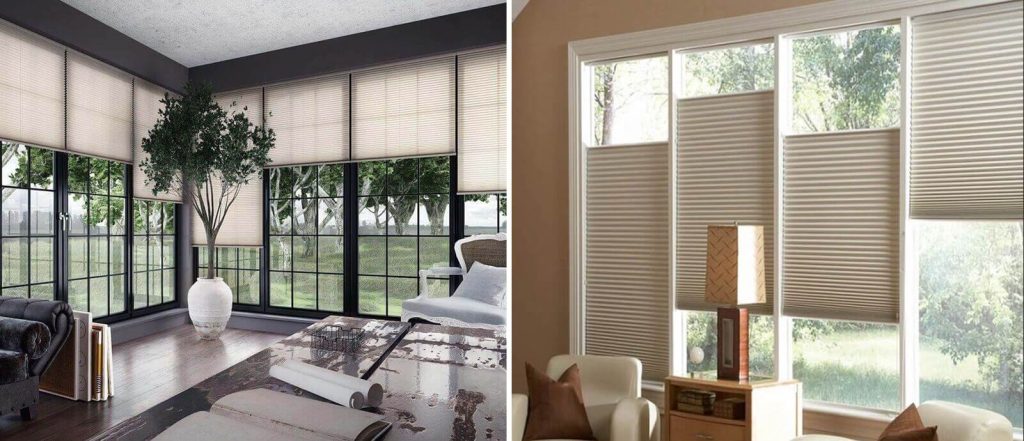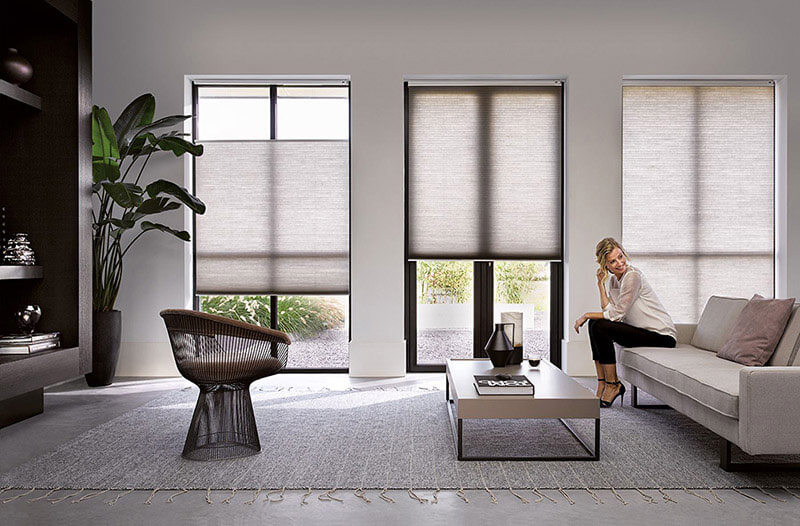Before addressing the question of the difference between honeycomb shades and cellular shades, let’s find out what they are.
Honeycomb shades or blinds as they’re also sometimes called, are a direct reference to an inspiration from nature. That’s because the ingenious cellular feature of these blinds hail from our bee friends. That’s right – honeybees.
There’s no denying that the structure of a honeycomb is a marvel in itself. But have you paused to think about why it has the design it does? It’s because it’s the most energy saving for bees. It allows them to use as less wax as possible, while storing as much honey as they can. This energy-efficient property led to the creation of honeycomb blinds, with exactly the same intent.
Not only do honeycomb blinds offer a contemporary look, they have incredible thermal insulation. They’re easy to maintain, and are available in varying cell sizes and styles. They’re also versatile enough to be used with any type of window, including arches and skylights. Overall, they prevent heat loss during Winter, and work to keep your home cool during those warm Summer months. Which in turn means you get to save on heating and cooling costs.
Practical, stylish and innovative, honeycomb blinds have much to offer. Let’s take a closer look at them here.
1. Are Cellular shades and Honeycomb Shades the same thing?
Yes they are. ‘Cellular’ is another name for honeycomb shades, because of their defining cell-like structure. The cell construction itself determines how much light control and insulation you need. There are three variations: Single, double and triple cell.
2. Why do we call them Honeycomb shades?
The geometric folds of these blinds have been borrowed from nature’s honeycombs, and are engineered for maximum energy efficiency. The one-of-a-kind hexagonal (6-sided) structure of the cells trap air within them, so it doesn’t escape easily. When you look at the cells from the side, you’ll find they look just like a honeycomb cell.
3. Which is better – Pleated or Honeycomb (Cellular) shades?
Pleated and honeycomb shades are two different product types, hence have their own unique benefits and features. However, if you’re looking to make a choice between the two, we’d lean towards honeycomb shades as they lead in energy-efficiency. In fact, they’re one of the best for this when compared with other window furnishings.
The exceptional insulation properties of honeycomb blinds create a more comfortable living space. Their streamlined design also ensures that they effortlessly blend into any home and individual preferences, with the ability to choose your cell size. They can be used as a top down/ bottom up window covering for privacy needs as well.
Perhaps the single most defining difference between pleated shades and honeycombs, is that the former only uses one layer of material. Honeycomb shades on the other hand, tend to use two or more layers at all times. This in itself makes a difference to the level of insulation you can expect. Additionally, while pleated shades look similar from the front, in terms of functionality they don’t meet the standard of honeycombs. They do however tend to be cheaper than honeycombs.
4. Are Honeycomb (Cellular) Shades Difficult to Clean?
Honeycomb shades aren’t too hard to clean, but they do need a bit more attention than other window coverings. This is because the cellular structure creates grooves, which can be hotbeds for dust to accumulate. Additionally, the cells themselves create hollow openings which once again attracts dust, and also insects. While you can lightly dust/ use the vacuum brush head to clean the outside, the inside of the cells is a bit different. The best way to clean them is with a can of compressed air. Simply pump into each cell space, and the pressure will dislodge any debris within, clean out the other side.
To sum up, honeycomb and cellular shades are one and the same: They’re just one product with two different names. They can improve the energy efficiency of your home by up to 32%, and have been tried and tested to do so. With honeycomb blinds keep warm in Winter, stay cool in Summer, and save more on your energy bills. Just brilliant!
Book an appointment for one of our expert consultants to come out and assess your needs. We’ll advise you on the ideal cell structure and blind shape for your windows, as well as the best fabrics. We’ll also help you balance blockout and light filtering solutions for your honeycomb blinds, so you can make the most of them. At the end of the day, our goal is your complete satisfaction.





